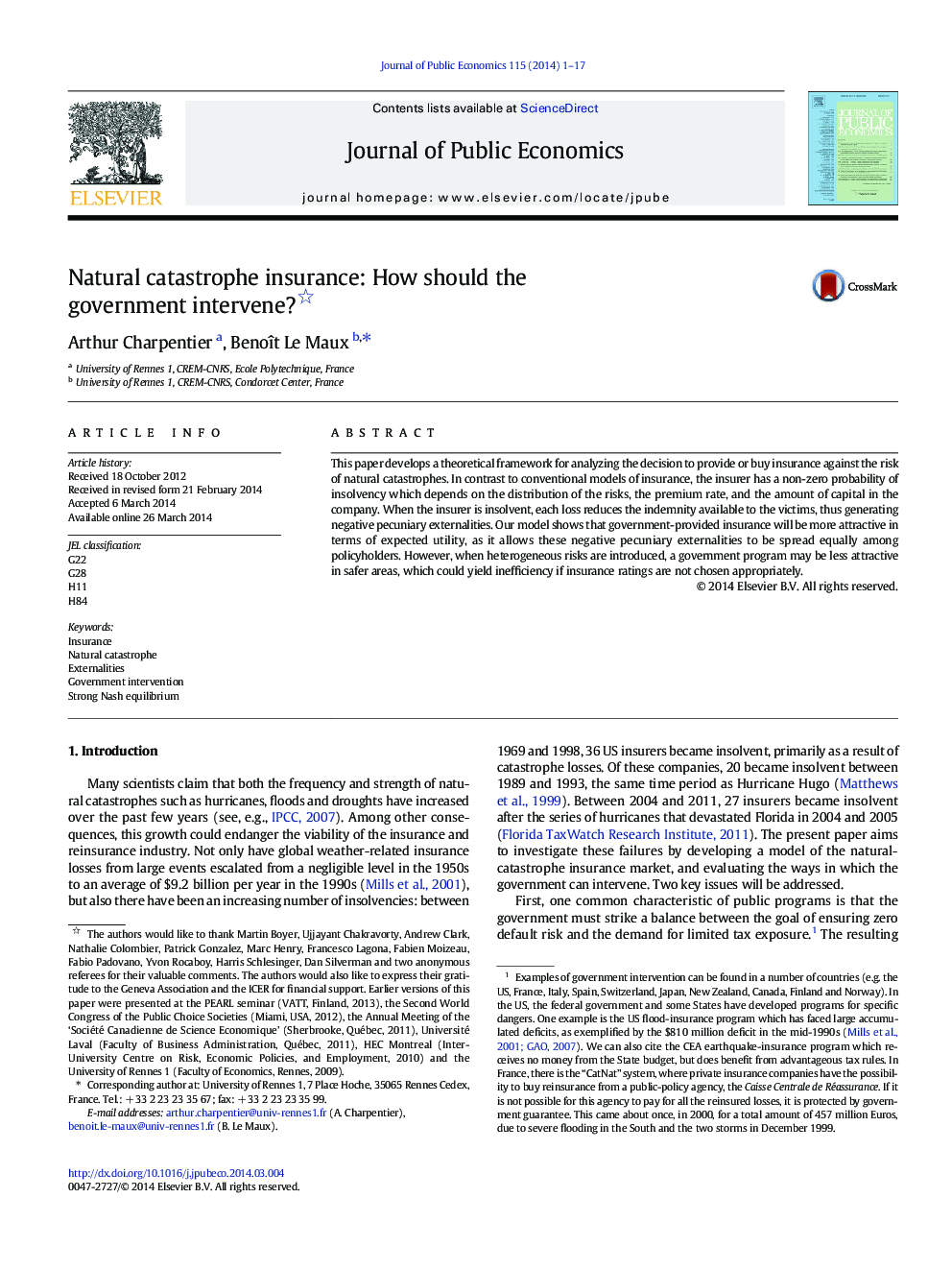| Article ID | Journal | Published Year | Pages | File Type |
|---|---|---|---|---|
| 969719 | Journal of Public Economics | 2014 | 17 Pages |
•The paper develops a model of natural catastrophe insurance market.•When the insurer is insolvent, each loss produces a negative pecuniary externality.•A government-provided insurance spreads these externalities more efficiently.•The pricing policy depends on the correlation between and within the regional risks.
This paper develops a theoretical framework for analyzing the decision to provide or buy insurance against the risk of natural catastrophes. In contrast to conventional models of insurance, the insurer has a non-zero probability of insolvency which depends on the distribution of the risks, the premium rate, and the amount of capital in the company. When the insurer is insolvent, each loss reduces the indemnity available to the victims, thus generating negative pecuniary externalities. Our model shows that government-provided insurance will be more attractive in terms of expected utility, as it allows these negative pecuniary externalities to be spread equally among policyholders. However, when heterogeneous risks are introduced, a government program may be less attractive in safer areas, which could yield inefficiency if insurance ratings are not chosen appropriately.
